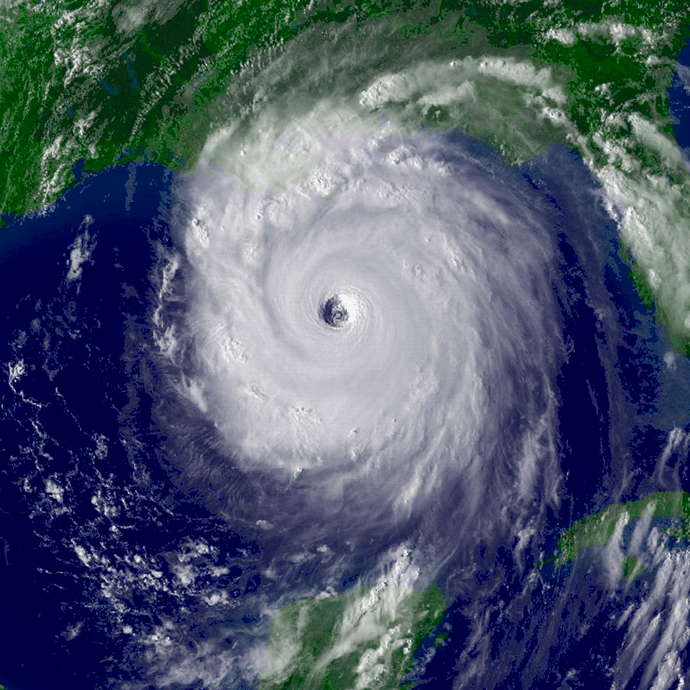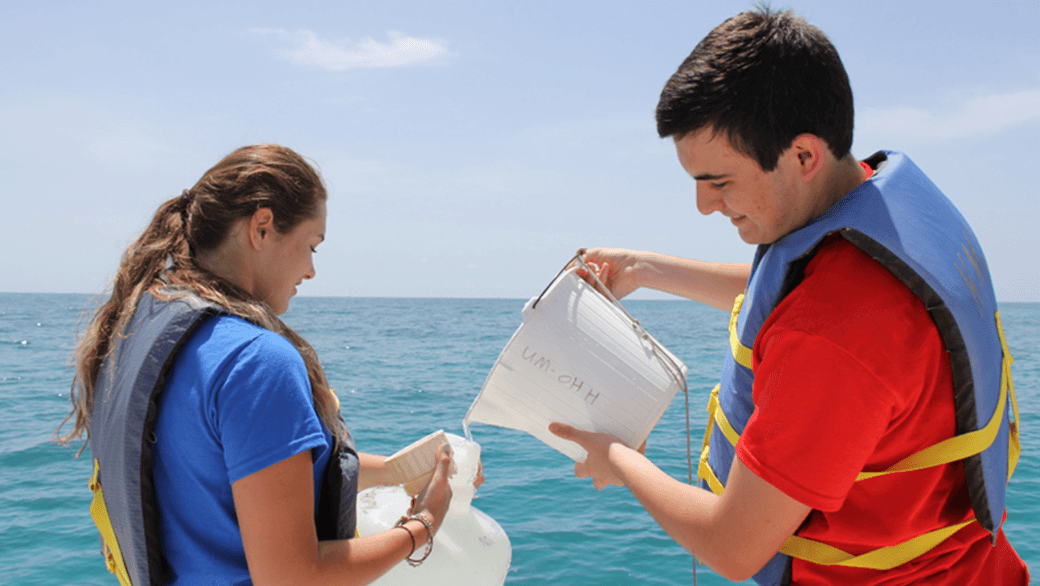Early on the morning of August 29th, 2005, Hurricane Katrina made landfall on the Louisiana delta region and the Mississippi coast. The storm surge brought enormous damage to the Gulf Coast and, when the levees around New Orleans failed, a great number of fatalities. Coming amidst the very busy 2005 hurricane season, Katrina brought death and destruction not seen in a U.S. land-falling hurricane in decades.
AOML Enlists Citizen Scientists for International Ocean Sampling Day 2015
Researchers with AOML’s Environmental Microbiology Lab joined a global effort to sample the smallest members of the ocean ecosystem on June 21 during International Ocean Sampling Day. Organized and led by the European Union’s MicroB3 organization and the Ocean Sampling Day Consortium, Ocean Sampling Day (OSD) is a simultaneous sampling campaign of the world’s oceans and coastal waters. These cumulative samples, related in time, space and environmental parameters, contribute to determine a baseline of global marine biodiversity and functions on the molecular level.
What are scientists looking for?
The organisms of scientific interest for the OSD campaign include microscopic Bacteria, Archaea, Fungi, Protists and viruses, collectively known as microbes. Microbes make up 98 percent of the biomass in Earth’s oceans and are responsible for most of the biological activity that takes place within it. Microbes are found everywhere, from the ocean surface to deep within rocks beneath the ocean floor. They are pervasive and can evolve rapidly in response to changes in the environment. In fact, many scientists consider microbes to be a “canary in the coal mine”, signaling local and global changes in the oceans. It is, therefore, important to acquire information from across the globe on this vast community of organisms, against which future changes can be observed and measured.
2014: The first global OSD effort
During the 2014 Ocean Sampling Day event, over 180 scientific teams participated from all continents ranging from subtropical waters in the Caribbean to extreme environments in the Antarctic Ocean. On this day, more than 600 people all around the world took water samples from the ocean in order to identify the microbes within. Scientists used the data collected to support projects focusing on environmental microbiology parameters that describe the relationship between marine microbes and human health and the health of our local marine ecosystems. This data will also provide insights to the ocean economy through the identification of novel, ocean-derived biotechnologies.
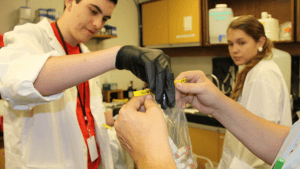
Researchers with AOML’s Environmental Microbiology Lab joined a global effort to sample the smallest members of the ocean ecosystem on June 21 during International Ocean Sampling Day. Organized and led by the European Union’s MicroB3 organization and the Ocean Sampling Day Consortium, Ocean Sampling Day (OSD) is a simultaneous sampling campaign of the world’s oceans and coastal waters. These cumulative samples, related in time, space and environmental parameters, contribute to determine a baseline of global marine biodiversity and functions on the molecular level.
What are scientists looking for?
The organisms of scientific interest for the OSD campaign include microscopic Bacteria, Archaea, Fungi, Protists and viruses, collectively known as microbes. Microbes make up 98 percent of the biomass in Earth’s oceans and are responsible for most of the biological activity that takes place within it. Microbes are found everywhere, from the ocean surface to deep within rocks beneath the ocean floor. They are pervasive and can evolve rapidly in response to changes in the environment. In fact, many scientists consider microbes to be a “canary in the coal mine”, signaling local and global changes in the oceans. It is, therefore, important to acquire information from across the globe on this vast community of organisms, against which future changes can be observed and measured.
2014: The first global OSD effort
During the 2014 Ocean Sampling Day event, over 180 scientific teams participated from all continents ranging from subtropical waters in the Caribbean to extreme environments in the Antarctic Ocean. On this day, more than 600 people all around the world took water samples from the ocean in order to identify the microbes within. Scientists used the data collected to support projects focusing on environmental microbiology parameters that describe the relationship between marine microbes and human health and the health of our local marine ecosystems. This data will also provide insights to the ocean economy through the identification of novel, ocean-derived biotechnologies.
Where are AOML scientists sampling?
This year, AOML will coordinate and sample ten OSD sites across the country. In addition to the 2014 sites in the Florida Keys, Ft. Lauderdale, Tampa Bay, La Jolla, California, and Horn Island, Mississippi, AOML will coordinate five new sites spread across the Florida peninsula from Pensacola to Miami. Sampling sites are expected to be monitored long-term as part of the international Genomic Observatories Network and the resulting database will be accessible to the public.
MyOSD: The citizen scientist component
OSD organizers have amended the citizen science component for this year’s event, allowing individuals from all over the globe to collect samples in their backyard using handy sampling kits. This component, called MyOSD, gives individuals the chance to help scientists unravel the mysteries of the marine microbial world by collecting important environmental data such as latitude, longitude, temperature, salinity, pH and wind speed.
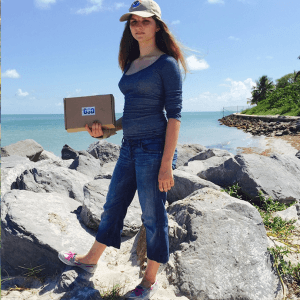
A citizen scientist from MAST Academy samples a site on Key Biscayne with a MyOSD kit. Image Credit: NOAA
AOML has coordinated and provided kits to a number of citizen science groups in Florida and California, including organized youth groups, citizen science organizations, educational centers, and outreach groups. Samples collected will represent a variety of different marine ecosystems including the open ocean, beaches, coral reefs, and estuaries.
We are excited to be working with a number of citizen scientists this year to expand our sampling effort and help contribute to our understanding of the ocean’s biodiversity said AOML. “
-Microbiologist Dr. Chris Sinigalliano
A baseline for the future
With the combined effort of researchers and citizen scientists, OSD 2015 continued the initiative to collect and share crucial information that can be used as a reference for generations of experiments to follow in the coming decades. Additionally, the data analysis procedures being developed for OSD are driving the field forward, but it is clear that much remains to be discovered about the microbial world. Scientists hope that such large-scale projects that provide an “ecological snapshot” become increasingly more common as they are essential for understanding the complexity of Earth’s systems.
Originally Published by Edward Pritchard, 2015
New Tools Bring Ecosystem Benefits to the Forefront of Decision Making
The Marine and Estuarine Goal Setting for South Florida (MARES) project, led by NOAA’s Cooperative Institute for Marine and Atmospheric Studies at the University of Miami, continues to increase awareness of and appreciation for the value of coastal marine ecosystems, and their impacts upon human society. From 2009 through 2013, NOAA’s National Centers for Coastal Ocean Science funded MARES with the goal of creating a consensus-based process for managing South Florida’s coastal marine environments. MARES is unique in that it was among the first major efforts to include human benefits in a systematic framework to enable integrated ecosystem based management. The MARES approach embodies NOAA’s effort to serve as the Nation’s environmental intelligence agency by providing actionable information from science-based models to support environmentally-sensitive decisions made every day by individuals, communities, and governments.
“NOAA took a leadership role in funding the MARES project, and it is a step in the right direction”, said Eric Millibrandt, director of the Marine Laboratory at Sanibel. “I’ve used the concepts provided by MARES to help colleagues and non-technical individuals to better understand the ecosystem and its preservation.”
When natural resource managers make decisions, it is important that they take both the needs of the environment, as well as human population requirements and perspectives into consideration. This integrated approach is necessary to sustain a physically and economically balanced and healthy ecosystem. Coastal populations rely on and interact with their unique marine and estuarine flora and fauna on a daily basis.
In the last century, increased population, coastal development, climate change and sea level rise have damaged South Florida’s marine environment. As these changes continue, the long-term status of South Florida’s ecosystems and valuable resources will continue degrading. The coastal habitat is crucial to the regional economy, which relies on ocean related jobs such as, fishing and tourism. Since a healthy ecosystem is needed for economic survival, the interactions between Florida’s population and the ecosystem is important and can be used to help guide the management decisions regarding South Florida’s coastal ecosystems.
Typically, research and management on marine ecosystems have focused primarily upon the negative impacts humans have on the environment. MARES investigators realized that for citizens to embrace marine policy, it is essential they understand not only the variety of pressures on the system, but the benefits they derive from it and their role within it. Over 50 researchers (both natural system and human dimensions scientists), managers, and stakeholders collaborated to understand and document cause and effect relationships and the societal benefits of South Florida’s coastal marine environments. By studying coastal waters in the Florida Keys/Dry Tortugas, the Southeast Florida Coast, and on the Southwest Florida Shelf, MARES was able to reach a consensus as to which regulating processes were most significant and which key characteristics must be sustained. The MARES team is publishing their findings in 15 research papers in a special issue (volume 44) of the journal Ecological Indicators entitled: “Tools to support ecosystem based management of South Florida’s coastal resources.”
The tools MARES developed are currently being used in community planning projects to show the existing status of the marine environment and to incorporate human benefits in ecosystem management. One of the most popular MARES products used by resource managers are the conceptual diagrams designed for the Southwest Florida Shelf, Southeast Florida Coast, and the Dry Tortugas/Florida Keys.
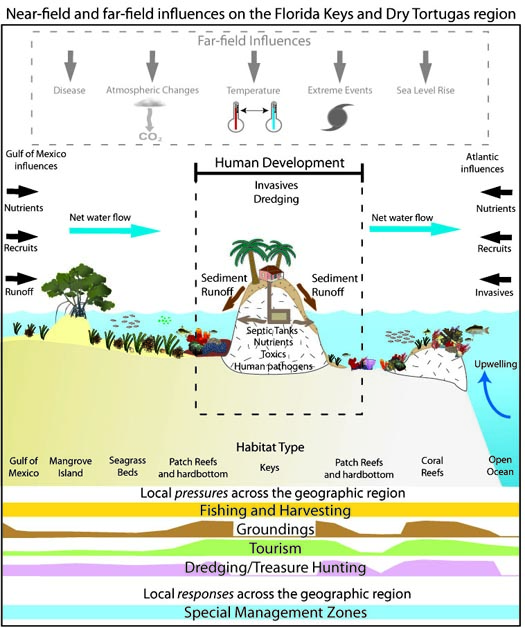
MARES conceptual diagram showing connections between FL Keys and Dry Tortugas
Additionally, NOAA’s National Marine Sanctuaries are evolving to include the MARES conceptual model framework in their guidelines. Sanctuaries’ Condition Reports currently provide a summary of resources in the Sanctuaries, pressures on those resources, the current condition and trends, and management responses to the pressures that threaten the integrity of the marine environment. Specifically, the current Condition Reports include information on the status and trends of water quality, habitat, living resources and maritime archaeological resources and the human activities that affect them. Future reports will be based on the MARES DPSER (Driver, Pressure, State, Ecosystem Services, Response) Model to clearly document ecosystem benefits to the public.
“MARES products and tools helped show us we need to integrate ecosystem services into our next generation of Conditions Reports said Bob Leeworthy, chief economist for NOAA’s Office of National Marine Sanctuaries. “These Next Generation Condition Reports will emphasize the value of services provided by ecosystems, all as a result of the MARES project.”
